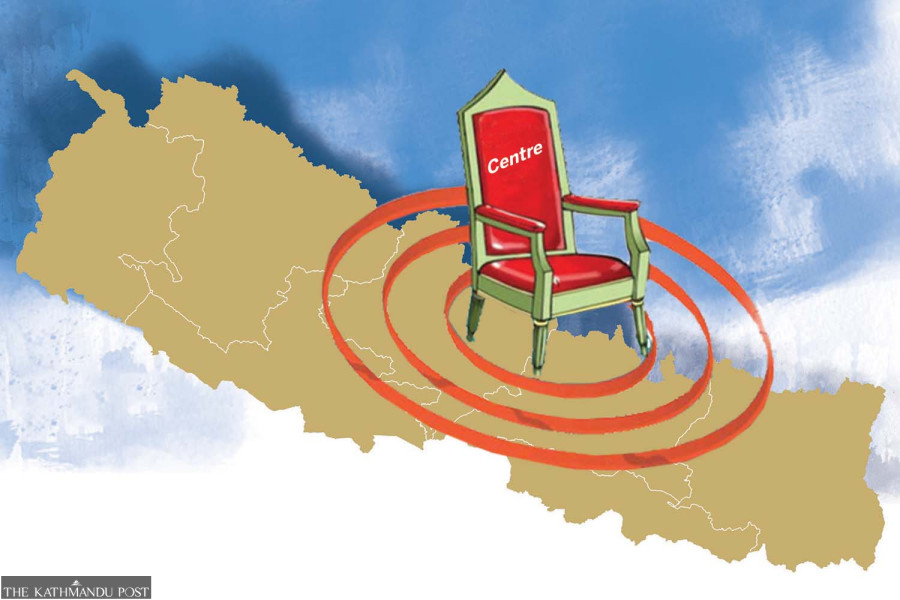National
What’s behind the growing calls to ‘scrap’ provinces?
Political parties have been accused of trying to centralise powers instead of working to strengthen the seven provinces, and ultimately rendering them ‘irrelevant’.
Nishan Khatiwada
Does Nepal really need provinces? In the lead up to the November 20 elections, there is a growing chorus of voices arguing that the provinces are only adding to the burden on state coffers.
Nor do big political parties seem particularly bothered about rebutting these claims. They in fact have no good plans to strengthen provinces and to help with the institutionalisation of the three-tier federalism.
Against this backdrop, the pro-monarchy Rastriya Prajatantra Party’s manifesto for November polls has pledged to scrap the provinces, while giving continuity to the central government and strengthening the local level.
The major parties, on the other hand, have not incorporated anything substantial to shore up the provincial structure, which has so far failed to work effectively, in their manifestos.
The parties in fact lack clear plans to strengthen the provinces. “It’s a pity that the political parties are reluctant to incorporate such a crucial matter in their manifestos,” said Pitambar Sharma, an expert on federalism.
Puranjan Acharya, a political analyst, said the major parties, despite their public statements, have not taken federalism and, by extension, provinces, seriously. “Political parties should acknowledge they are on the wrong track as they have been sidelining provinces and practising centralism,” he told the Post.
Sharma echoes Acharya. “The major political parties want to centralise power at the cost of federalism,” he said.
The 2015 Constitution of Nepal provides for three tiers of government—with singular and combined rights. And the relation between the three tiers will be based on Sahakarita (cooperation), Sahaastitwa (co-existence), and Samanwaya (coordination).
Article 56 (1) states that the main structure of the Federal Democratic Republic of Nepal shall have three levels, namely the Federation, the Province and the Local Level. Article 56 (2) states: “The Federation, Provinces and the Local Level shall exercise the State power of Nepal in accordance with this Constitution and the law.”
The spirit of the constitution has been blatantly ignored, observers say.
“The problem is that political parties did not allow the provinces to function independently in the past five years,” said Krishna Prasad Sapkota, a local governance expert.
They do not have effective party structures in provinces—even the available structures have few rights, he said. “Ticket-distribution for provincial polls should be the right of the parties’ provincial committees, but it is the party headquarters that have been unilaterally picking candidates.”
If a handful of prominent leaders are contesting in provinces, it is alleged, they are doing so to be the chief minister. Sapkota agrees. “Provincial leaders, sadly, have turned into big leaders’ puppets,” he said. “They never speak up against the party brass even when it is working to undermine the provinces.”
The governments after the 2017 elections did not work effectively to strengthen the provinces, observers say, leading to public dissatisfaction.
Sharma said the relevance of the provinces has been questioned due to growing frustration with the lack of progress and work of provinces during the past five years. “The concern is, in fact, valid. Nepal’s political parties have been reluctant to delegate even the constitutionally-guaranteed rights to the provinces.”
But there is also hope that as federalism is a new exercise for Nepal, time will be the ultimate healer.
It is too early to say federalism has failed as it takes some time for the concept to take shape, said Acharya. “Even India’s federal structure took a long time to take shape.”
Sharma argues strengthening provinces with more rights is a must for the nation’s overall development. “There is no clear way of turning back from federalism now, or of ditching the provinces,” he said.




 18.12°C Kathmandu
18.12°C Kathmandu















